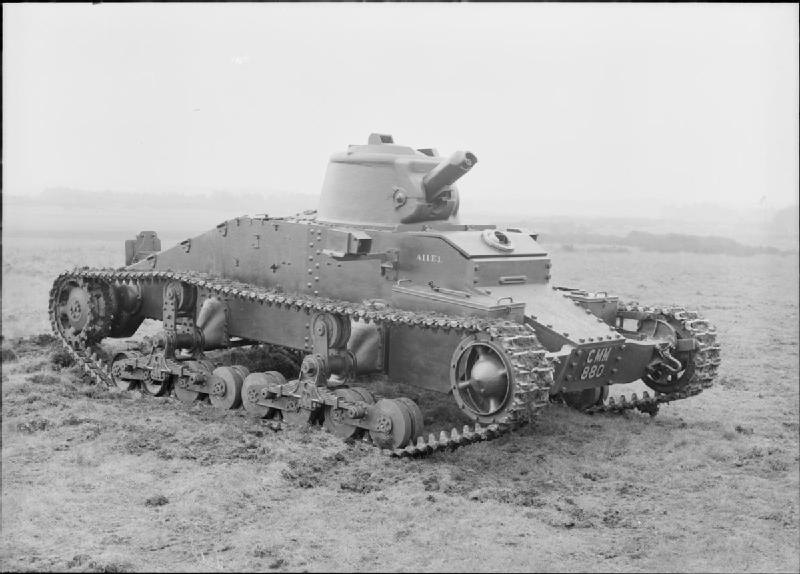(CONTINUED FROM ABOVE)
Part of British 1st Army Tank Brigade attached to “Frankforce” (5th and 50th Divisions)
and taking part in the Battle of Arras on May 21, 1940.
Tank, Infantry, Mk I, Matilda I (A11)
http://en.wikipedia.org/wiki/Matilda_Mk_I

Maximum armor: 60 mm
58 Mk I total at Arras
Tank, Infantry, Mk II, Matilda II (A12)
http://en.wikipedia.org/wiki/Matilda_tank

Maximum armor: 78 mm
16 Mk II total at Arras
Standard German 3.7cm PAK anti-tank gun (considered the best anti-tank gun in general service in the world at that time) shells were unable to penetrate the heavily armored Matilda tanks. One tank had fourteen gouges made in it’s armor by shells that failed to penetrate. Although a few British tanks suffered broken tracks or were hit by German dive bombers. In the early stages of the battle the Germans lost six Pzkw III’s, three Pzkw IV’s and some Pzkw II’s. The British lost seven Mk. I’s. Also in the initial stages 400 German prisoners were taken. Only by the personal intervention of General Erwin Rommel and his skillful use of 8.8cm FLAK guns firing Panzergranate (armor-piercing shells) were the British tanks finally stopped. The British withdrew after 48 hours of battle. During the battle, the German 7th Panzer Division suffered its highest losses for the campaign. Arras was the most significant counterattack made against the Germans during that stage of the war in France.
Strategically, the operation was a British success. By delaying the German armor for two and a half days, four British divisions and a large part of the French 1st Army were able to withdraw in good order to the channel coast.
The success of British tanks against German armor intimidated the German High Command, which ordered its panzers to halt. Rommel’s 7th Panzer Division was pulled back for rest and repairs. Later, the Germans decided to conserve their tanks for future battles in central France (Operation “Red”).
A direct consequence of this decision by the German High Command was that the panzer divisions were prevented from attacking Dunkirk. This was very important, because it helped preserve the BEF (British Expeditionary Force) for evacuation from Dunkirk (Operation “Dynamo”). The successful rescue of the BEF at Dunkirk was a turning point in the war; almost a quarter of a million British soldiers were saved from capture during the evacuation, including almost all of Britain’s regular peacetime army. Had they been lost, there would have been very few first-class professional soldiers left to train a new army.
from: Blitzkrieg: From the Rise of Hitler to the Fall of Dunkirk, Len Deighton, Ballantine Books, 1980, p 252-254, 265
and Illustrated World War II Encyclopedia, Lt Col Eddy Bauer and Brigadier Peter Young, H.S. Stuttman Inc., 1978, p 165
SEE ALSO:
http://en.wikipedia.org/wiki/Battle_of_Arras_(1940)
http://history.farmersboys.com/Battles/defence_of_arras.htm
http://search.bbc.co.uk/cgi-bin/search/results.pl?uri=%2Fww2peopleswar%2Findex.shtml&q=ARRAS%2Bww2&x=11&y=4
http://pedia.counsellingresource.com/openpedia/Battle_of_Arras_(1940)
http://www.search.com/reference/Battle_of_Arras_(1940)
http://www.bbc.co.uk/ww2peopleswar/timeline/factfiles/nonflash/a1119926.shtml?sectionId=2&articleId=1119926




















